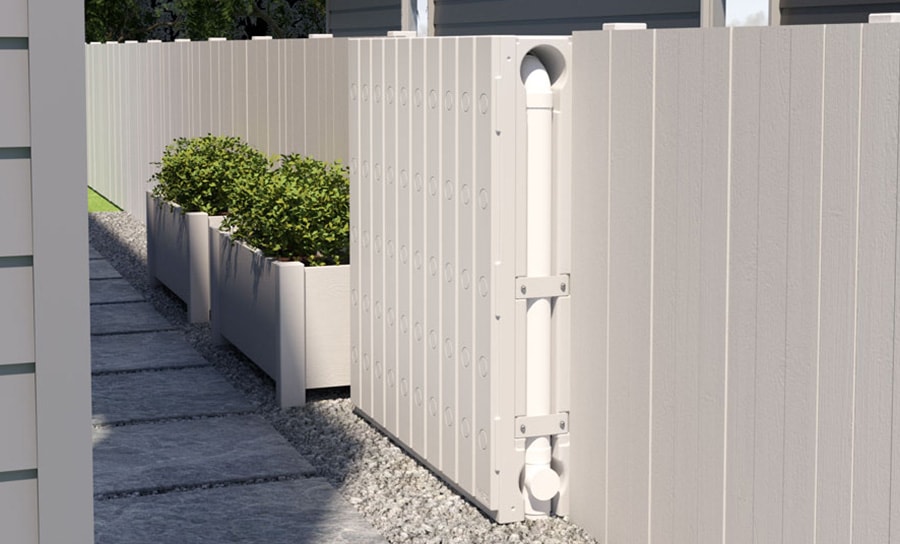Slimline Water Tanks: Trendy and Practical for Modern Homes
Slimline Water Tanks: Trendy and Practical for Modern Homes
Blog Article
Comprehending the Value of Rainwater Containers in Drought-Prone Regions for Water Safety And Security
In regions at risk to extended dry spells, the role of rain tanks in reinforcing water security is a topic of growing value. As neighborhoods grapple with the difficulties of water scarcity, comprehending the importance of these containers exceeds plain collection of rain. Rain storage tanks act as an important tool in alleviating the influence of water scarcities by providing a sustainable resource of water for various needs. The real value of rainwater containers extends much beyond mere storage space; it includes resilience-building procedures and the promo of lasting water conservation techniques. This multifaceted approach to water security warrants a closer assessment of the duty rain tanks play in guaranteeing a dependable water throughout times of drought.
Benefits of Rainwater Tanks
Using rain storage tanks offers a lasting option for increasing water system and enhancing water safety in property and business settings. One of the main benefits of rain tanks is their ability to reduce dependence on mains water. By recording and saving rain that falls on rooftops, this alternate source can be used for various non-potable objectives such as watering, flushing toilets, and washing clothes. This not just saves treated drinking water but also lowers water costs for users.

Rain Harvesting Techniques
Rain harvesting techniques incorporate a variety of techniques created to efficiently accumulate and store rain for numerous functions, adding to water conservation and sustainability. One common method is the installation of rooftop catchment systems, where rainwater is collected from the roofing system of a building and guided to a tank. This approach is reasonably easy and cost-effective. Another popular strategy is making use of above-ground or below ground storage containers to store rainwater for later usage. These containers can be found in various dimensions and products to suit different demands and can be connected to the existing pipes system for simple accessibility.

In addition, rainfall yards and permeable sidewalks are innovative methods that entail landscaping or paving surfaces in such a way that permits rain to percolate right into the ground, replenishing groundwater gets. Furthermore, contour farming and terracing are farming practices that assist catch rain and avoid dirt erosion in uneven terrain. By implementing these varied rain harvesting methods, communities can boost water security and resilience in drought-prone areas while promoting lasting water monitoring practices.
Value of Water Safety And Security
Making certain dependable access to tidy and enough water sources is paramount for maintaining human health, economic growth, and environmental wellness. Water safety and security is a crucial element of social resilience, especially in areas at risk to droughts and water shortage. Appropriate water safety encompasses various measurements, consisting of availability, quality, and ease of access of water for domestic, agricultural, industrial, and ecological requirements.
Water protection plays an important duty in advertising public health and wellness by lowering the occurrence of waterborne illness and making certain cleanliness centers. site Financially, water protection is vital for farming efficiency, industrial operations, and overall financial development. Slimline water tanks. Water security is very closely connected to environmental sustainability, as it supports environments, biodiversity, and total environmental balance.
In drought-prone regions, water security becomes much more crucial due to the increased risk of water shortages. Carrying out approaches like rainwater harvesting, water recycling, and reliable water management techniques can significantly improve water safety in these areas. By prioritizing water security, areas can much better endure the effects of climate change, populace growth, and various other challenges that intimidate water schedule.
Enhancing Water Resilience
With enhancing global water obstacles, constructing resilience in water supply has become a critical focus for lasting growth efforts. Enhancing water resilience includes implementing methods to make certain water accessibility and high quality when faced with transforming environmental problems, such as dry spells, floodings, and air pollution.
One secret facet of enhancing water durability is promoting making use of rain tanks in drought-prone areas - Slimline water tanks. Rainwater storage tanks act as a reliable ways of catching and storing rainwater for later usage, lowering reliance on limited freshwater sources throughout completely dry periods. By integrating rain harvesting systems right into water administration strategies, neighborhoods can boost their capacity to withstand water deficiency and maintain water security

Sustainable Water Preservation
In the middle of escalating water obstacles, the prudent monitoring of water sources via sustainable conservation practices is important for making certain long-term environmental stability and social wellness. Lasting water conservation requires the efficient use of water sources to satisfy current demands without jeopardizing the capability of future generations visit this site to satisfy their own needs. By implementing techniques such as rain harvesting, greywater recycling, and water-efficient modern technologies, communities can reduce water wastefulness and relieve stress on freshwater resources.
Moreover, lasting water conservation practices add to ecosystem visit wellness by preserving appropriate water degrees in rivers, lakes, and wetlands, supporting biodiversity, and protecting natural environments. These methods additionally play an essential role in minimizing the influences of climate modification by assisting to adapt to changing rainfall patterns and water schedule.

Conclusion
Finally, rainwater storage tanks play an essential role in improving water safety and resilience in drought-prone regions. By making use of rain harvesting methods, communities can minimize their dependence on traditional water resources and promote lasting water preservation techniques. This not just helps alleviate the effects of water scarcity throughout dry spells however also adds to long-term water security and durability in the face of environment adjustment difficulties.
Report this page